

Korean Dining Table
If we were to ask a non-Korean reader what the best Korean food was, what would be their answer? They would probably include bulgogi marinated beef strips, bibimbap mixed rice with vegetables, fried chicken and beer, or even kimchi. How about the flavor that Korean people themselves love the most? Many of them would probably say “spicy.”
Written by Joo Young-ha, Professor of Folklore Studies, The Academy of Korean Studies

A Typical Homestyle Korean Diet
If you ask me, my answer would be “the flavor of rice, side dishes and soup, all mixed together in the mouth.” Try to recall a time when you were eating with Korean people, if you ever have. Or you could refer to a family meal scene in a Korean TV show or movie. The table has on it rice and side dishes. Then there are bowls of soup next to the rice, or a large pot of soup or stew in the middle of the table. There's a certain order in which people would normally consume these items.
First, they get a spoonful of soup using their right hand and take a sip. Then, they use the spoon to get rice and put it in their mouths. Immediately, they put the spoon down, either on the rice bowl or where it was on the table, and quickly, using the right hand again, they pick up their chopsticks. With the chopsticks, they get a piece of a side dish and put that, too, in the mouth. As it takes less than 10 seconds to perform these moves, the rice and side dish are being chewed and mixed together in the mouth.
This procedure for eating rice is hardly unique to Korean cuisine. Rice is eaten the same way across East Asia, in Japan, Taiwan and even Southeast Asia. Unlike bread or noodles, rice usually doesn't contain salt. Thus, it always has to be consumed together with a side dish.

However, many people take this one step further, revisiting their soups or stews with the spoon and putting even more broth into their mouths while chewing the rice and side dishes. The addition of broth to the mixture of rice and side dish turns the concoction into something like bibimbap mixed rice in the mouth. Finally, all there is to do is to swallow. The entire process takes 15 seconds at most. This process keeps repeating in the same order, with only the choice of the side dish changing each time.
When starchy rice is chewed slowly for a long time, the amylase enzyme in the saliva is activated. The ptyalin in the amylase plays an important role, hydrolyzing the starch in the rice into sugar. This is why rice tastes sweet when chewed. The addition of saltiness and spiciness from the side dishes further enhances the flavor of the rice.
Side dishes containing meat or fish add animal proteins to the sweetness of the rice. The amino acids in the animal protein mix with the rice to fill the mouth with a savory taste. Just fill a lettuce leaf with a spoonful of rice, a piece of well-grilled pork, and some cabbage or spring onion kimchi, then wrap it all up, put it in your mouth and chew. The delightfulness of this combination is known only to those who have tried it.
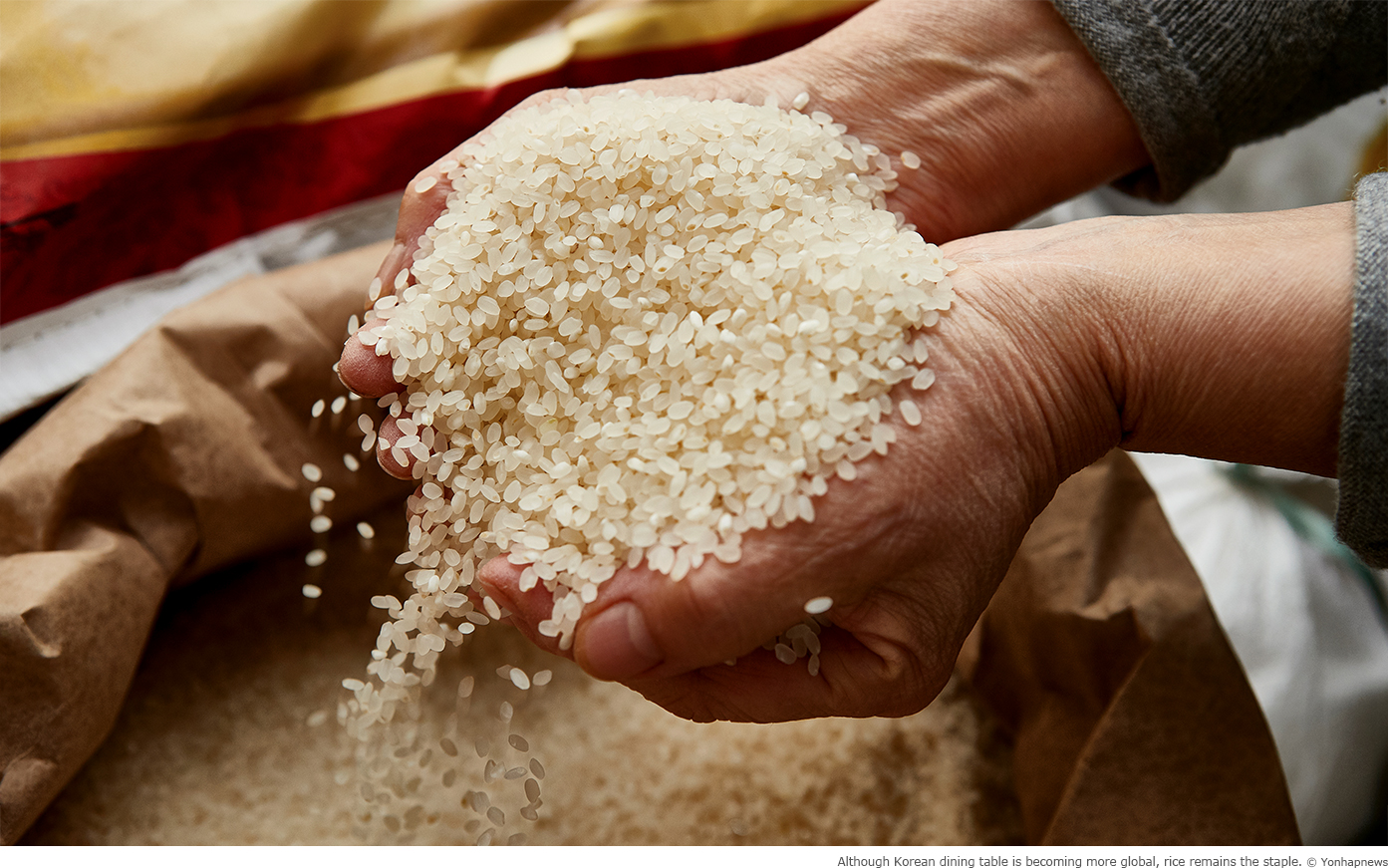
Soup is Backbone of the Korean Diet
This is exactly what I mean by “the flavor of rice, sides and soup mixed together in the mouth.” People view a meal as complete only when the table contains rice, soup, side dishes, a spoon and chopsticks. Even after filling their bellies to the limit with bulgogi marinated beef strips or galbi ribs, people end the meal with a little rice, soy bean paste stew or cabbage kimchi, as if ordering dessert.
Sometimes people opt for Pyeongyang-style cold buckwheat noodles after a meal of fried ribs or pork barbecue. In this case, the noodles act as a substitute for the rice, the broth of the noodles for the soup, and a white kimchi for the side dish. People often pair fried chicken with pickled radishes, colloquially called “chicken radish.” The pickled radishes refresh the palate in a way similar to kimchi when kimchi is consumed with rice. There are also people who drink the sweet and sour brine of the pickled radish because they’re used to pairing a soup with solid food.
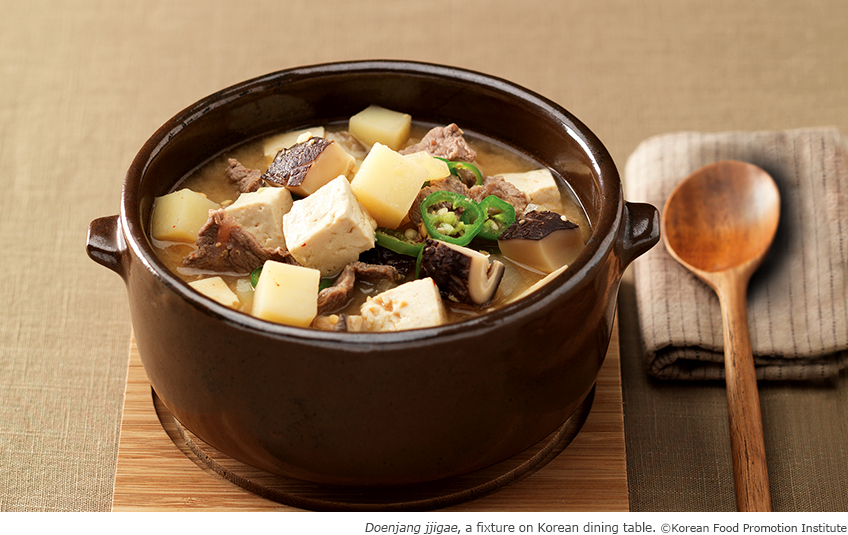
Unlike other cuisines where rice is consumed as a staple, Korean cuisine tends to be structured so that a meal without a soup is deemed incomplete. These soups are usually made by pouring a large amount of water over meat, fish or vegetables, and then seasoning it to taste. There's a wide variety of these soups, including guk, tang, jjigae and jeongol. Clear broths containing a large volume of solid ingredients are called tangs, while those with a smaller volume of solids are guks. Jjigaes are served after solid ingredients have been fully boiled in a thick broth, while jeongols consists of a lighter broth and raw ingredients that are boiled at the table.
For almost 600 years, from late Goryeo (918-1392) to the end of Joseon (1392-1910), and then 100 years more into the 20th century, people have equated the performance of ancestral rites with the survival of the family itself. Rice and soup are the most basic offerings in these ancestral rites. Just like the riddle of the chicken and the egg, it’s hard to say whether the tradition of drinking soup was born from the neo-Confucian rules governing ancestral rites, or if the preference for soup in Korean cuisine led to its vital role in the Confucian rites. Only one thing is for certain: Korean dining table is incomplete without a soup or stew.
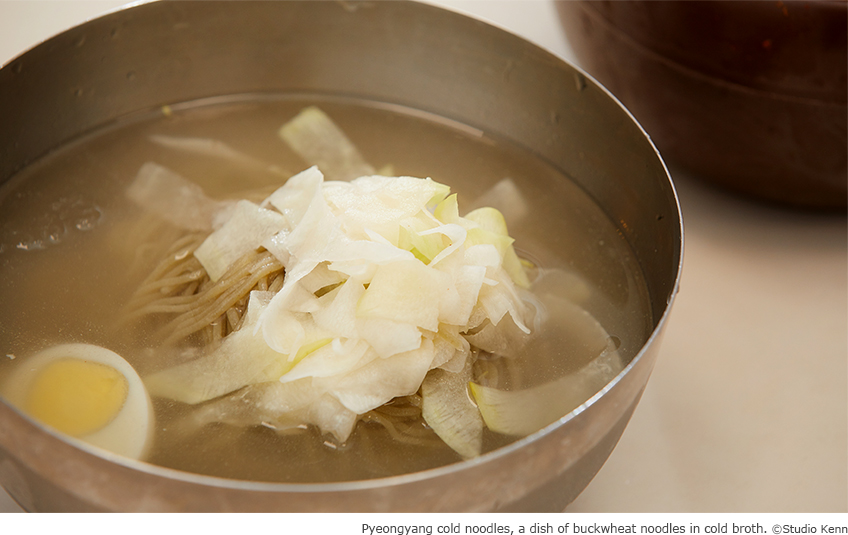
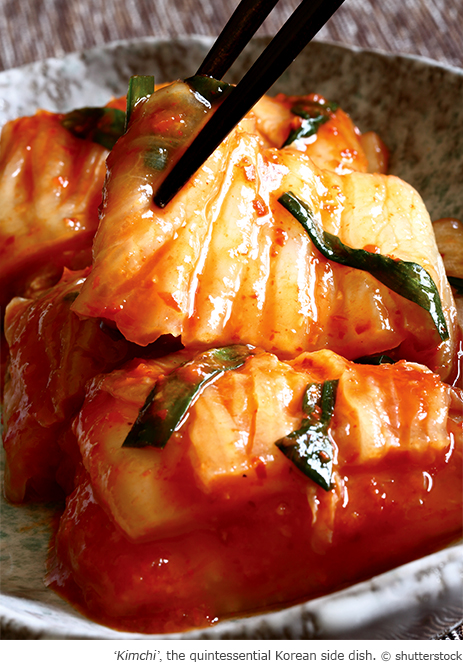
Alternating Between Spoon and Chopsticks
Actually, members of the ruling classes across the Korean Peninsula and mainland China used spoons to eat rice and soup until the 1100s. However, since noodles and buns became staples in Northern China around the 600s or 700s, Northern Chinese cuisine moved toward a chopsticks-focused fare. On the other hand, the Korean Peninsula wasn't conducive to wheat farming. Thus people here continued to eat rice made from grains together with soups and side dishes. This necessitated the use of both chopsticks and spoons, a practice that continues to this day.
A non-Korean I met once noted that Koreans use both hands when dining, each hand holding a spoon or the chopsticks, like Westerners do with forks and knives. This is a reasonable suggestion. However, neo-Confucianism dictates that only the right hand -- the proper hand -- be used for eating. Thus, from Joseon until the 1980s or 1990s, people were taught to only use their right hand when they first learned to pick up their own spoons and chopsticks.
When many people sit together at a large on-the-floor dining table with their legs crossed, left handed people must sit at the far left corner of the table to avoid inconveniencing everyone. As the majority of people use only their right hand when eating, alternating between spoons and chopsticks, left-handed diners might bump elbows with right-handed diners if they were all mixed together. This is why a considerable number of left-handed people just switch to using their right hands during mealtime.
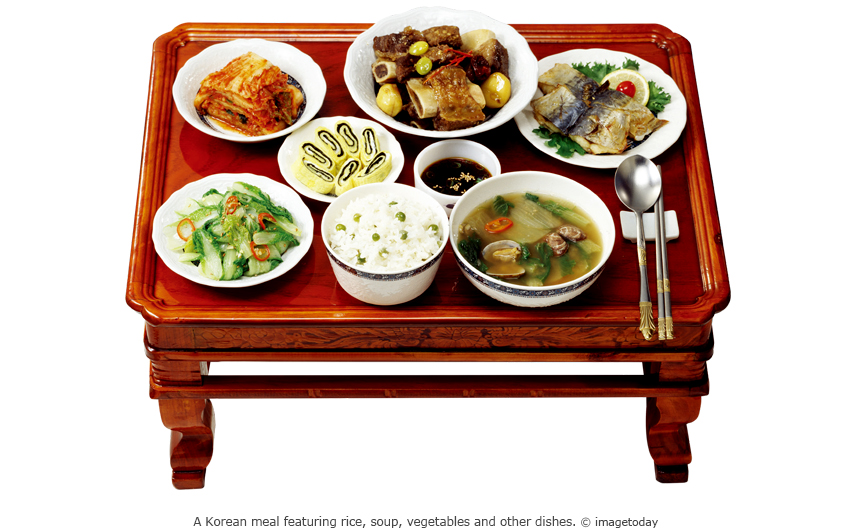
Let’s Have a Meal Together Sometime
Tables with shared serving dishes can be easily spotted not just in Korea, but in Japan, China and Vietnam, too. However, it's the rule at Korean dining tables that only the rice and soup are had individually. All the side dishes are communal. Everyone eats from a single pot of stew, using the spoons they put into their mouth without any qualm.
Some people from the West may find this way of eating to be strange, or even unhygienic. However, it's a long-held custom and extremely natural for many people. Most people continue to share stews and side dishes at the same table. In fact, many of them think that this communal dining breeds kinship at the table. Just as they mix rice, side dishes and soup together in their mouths, they share side dishes with other people, sharing the table with them to heighten the sense of closeness.
People like to say, “Let’s have a meal together sometime,” as parting words to a new acquaintance they would like to meet again. If you meet a Korean person, and if you would like to befriend them, please say to them, “Let’s have a meal together sometime.” This is the best way to get closer to people and to their dining heritage, building a kinship between people.
Other Articles




Jejudo Island

Carpenter and Important Intangible Cultural Property No. 55

A Universe of Their Own

Signpost to Lasting Peace


without the Beef, Please

the Pulse on the Young
Application of subscription
Sign upReaders’ Comments
GoThe event winners
Go


 April 2018
April 2018


